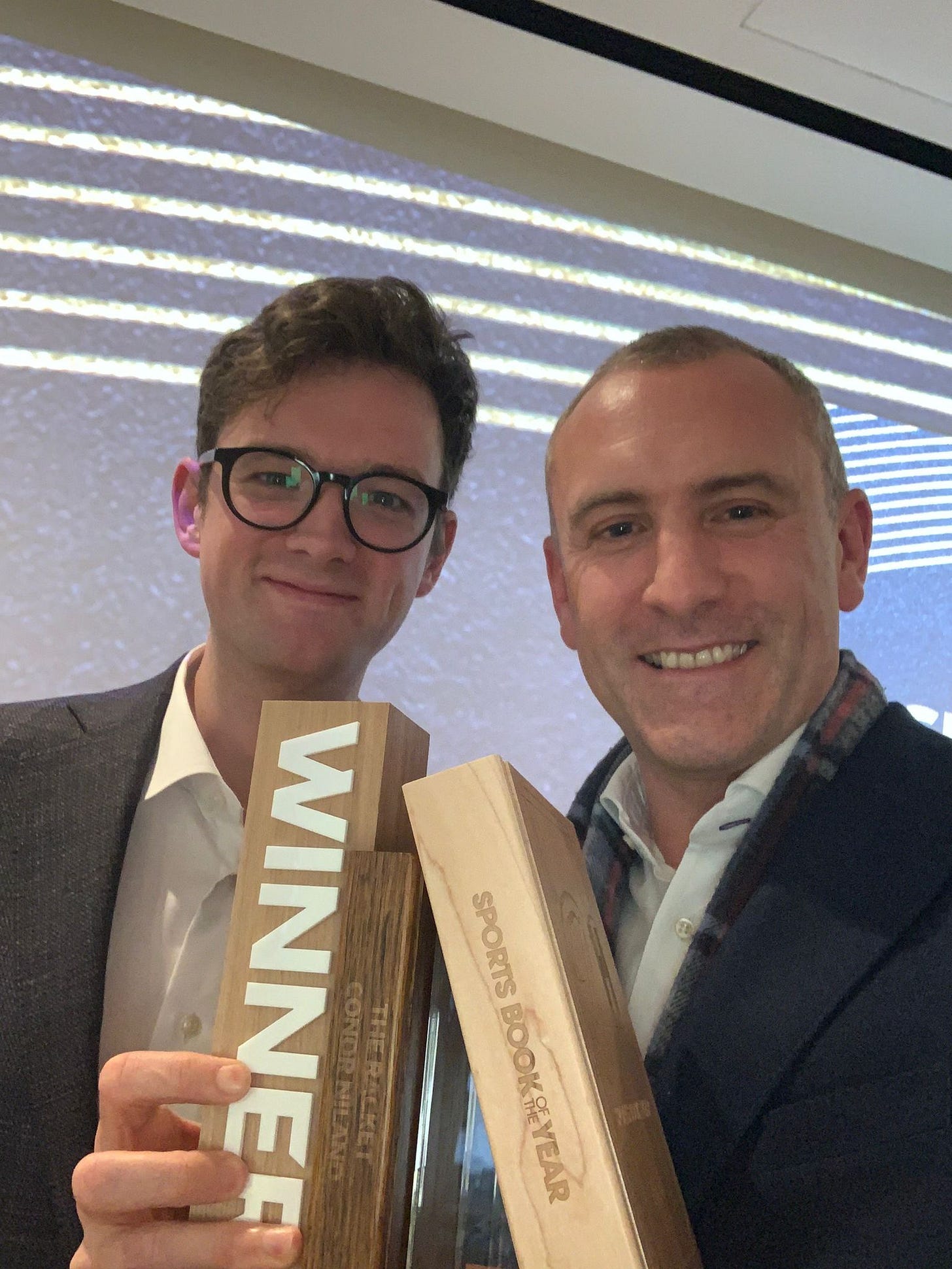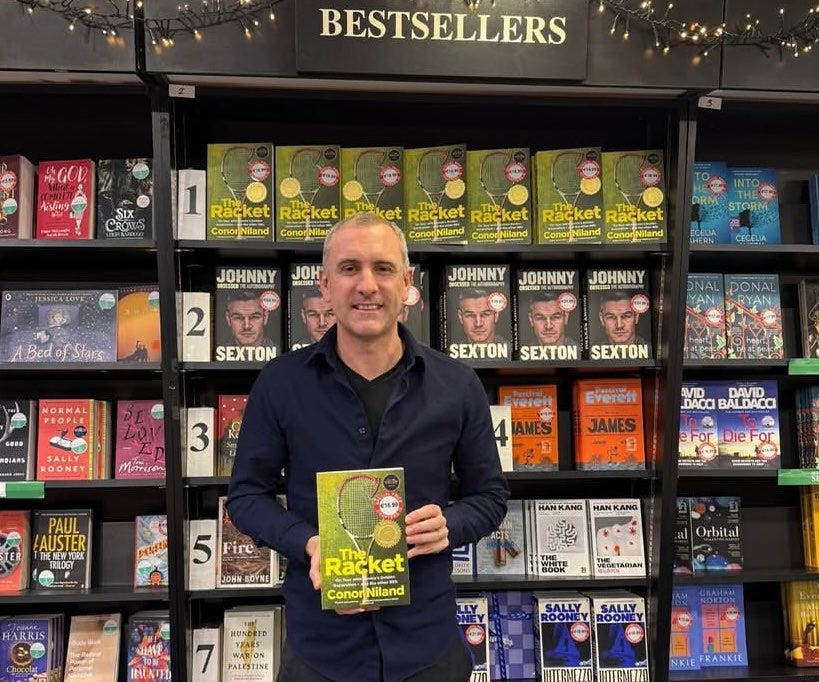The Ghost of Conor Niland
How Irish journalist Gavin Cooney helped shape the best sports book of 2024
After 14 years of publishing, we have become obsessed with the process as much as the content of sports books: cover, title, editorial process, promotion / marketing.
The editorial process — structuring and shaping a narrative, more than making sure commas and full stops are in the right place — is an acquired skill … and it took us a while to get good at. Neil’s big learning curve came in 2011, when he edited Barca: The Making of the Greatest Team in the World, by Graham Hunter. After that, he graduated from being a newspaper sub-editor / former sports writer… to a book editor.
My big leap forward came in 2018/19, when I worked on Pep’s City, by Pol Ballus and Lu Martin. The boys had written the original book in Spanish. So, we had to get that translated. Then we asked them to write more material covering the 2018/19 season. Then we had to fuse both ‘books’ together. There was plenty metaphorical blood on the carpet. But Pol and Lu were amazing to work with. They signed up for most of the changes, pushed back on some — and collectively we made it a better book.
On Friday’s post, I nominated The Racket, by Conor Niland, as my sports book of the year (it won this year’s William Hill Sports Book of the Year). On reading, I could sense the care and attention that had gone into constructing the narrative. I was interested that the Irish sportswriter Gavin Cooney was involved in the process, so I asked him how he dovetailed with Conor.
Here’s what he said…
How did you and Conor meet?
We met through our publisher, Penguin Sandycove. Conor had been working with them for a little while, as he had used the Covid lockdown to begin writing memories and scenes from his career, and so had brought them to Penguin to develop into a book. He (selflessly!) decided he wanted to work with a ghostwriter on the project to make the book as good as it could be, and so I consider it the greatest break in my professional life that Penguin contacted me. They ran the idea past me, it took me about half a second to agree to a sit down with Conor, and things happily clicked from there.
I was amazed at the recall Conor had. Did he keep a diary during his career? And were there any other resources - news cuttings, old interviews, testimony of family and friends etc - that you were both able to lean on to give the book the authority and detail it has?
Conor's recall is fantastic. He kept some notes, but it's one thing to remember events and another thing entirely to observe them - Conor is a big reader and he has a fiction reader's eye for observation, and he always spotted the one detail in a scene to bring it to life. It's a tremendous skill and it animated the book. Otherwise, press clippings were useful for corroboration and I went through the newspaper archive to ensure we covered everything, but I really need to give major credit to the ITF website, which has a full run-down of a player's career matches. We would scroll through a year's worth of games and that would trigger memories, which then spun off into fantastic terrain. We also had a few DVDs of his biggest matches - I worked the film of his Wimbledon match to the point of exhaustion when writing that chapter.How did the ghosting process work? Can you break it down a little bit, in terms interviews, artistic licence, approval process etc?
It was far from a traditional ghosting process (or so I am told - I'd never done a book before). Conor is an excellent writer, and he wrote a good chunk of the book before I ever appeared on the scene to steal some glory! Some of those scenes are almost untouched in the book, and it would have been mad for me to meddle with them, especially the scenes with his Dad. It would have been absurd for me to think I'd improve on them with ghosted interviews when he had directly poured his heart onto the page. My role, really, was to ensure this functioned as a book. We had to draw up a proposal that met the publisher's demand that the book would be an exploration of the world of pro tennis rather than simply Conor's autobiography. So we developed a very detailed proposal before we signed a deal - I think it ran to more than 10,000 words - and so that was a great roadmap for us. We then did interviews where it was my job to tease out the topics and subjects that were necessary to build the book's structure, and I wrote the whole thing up and blended in Conor's existing writing. From there I sent the draft to him and he went through it in really superb detail, adding so many little observations and information, all of which vastly improved what was on paper. I then got that draft and tried to sand off the edges, to ensure consistency in how it read, protect the structure, and make sure we were maintaining balance of Conor's story vs World of Tennis story. We went back and forth a few times on it like . . . well, you can figure out the apt sport for this metaphor. We also had the great fortune to work with an outstanding editor in Brendan Barrington who made the book miles better again. Writing is generally a solitary thing, but this book was a team effort, and that was the aspect of the whole thing I enjoyed the most.👉 If you’re interested in ghostwriting, check out my interview with Ian Ridley who ghostwrote Tony Adams’ brilliant autobiography Addicted, which came out in 1998.





